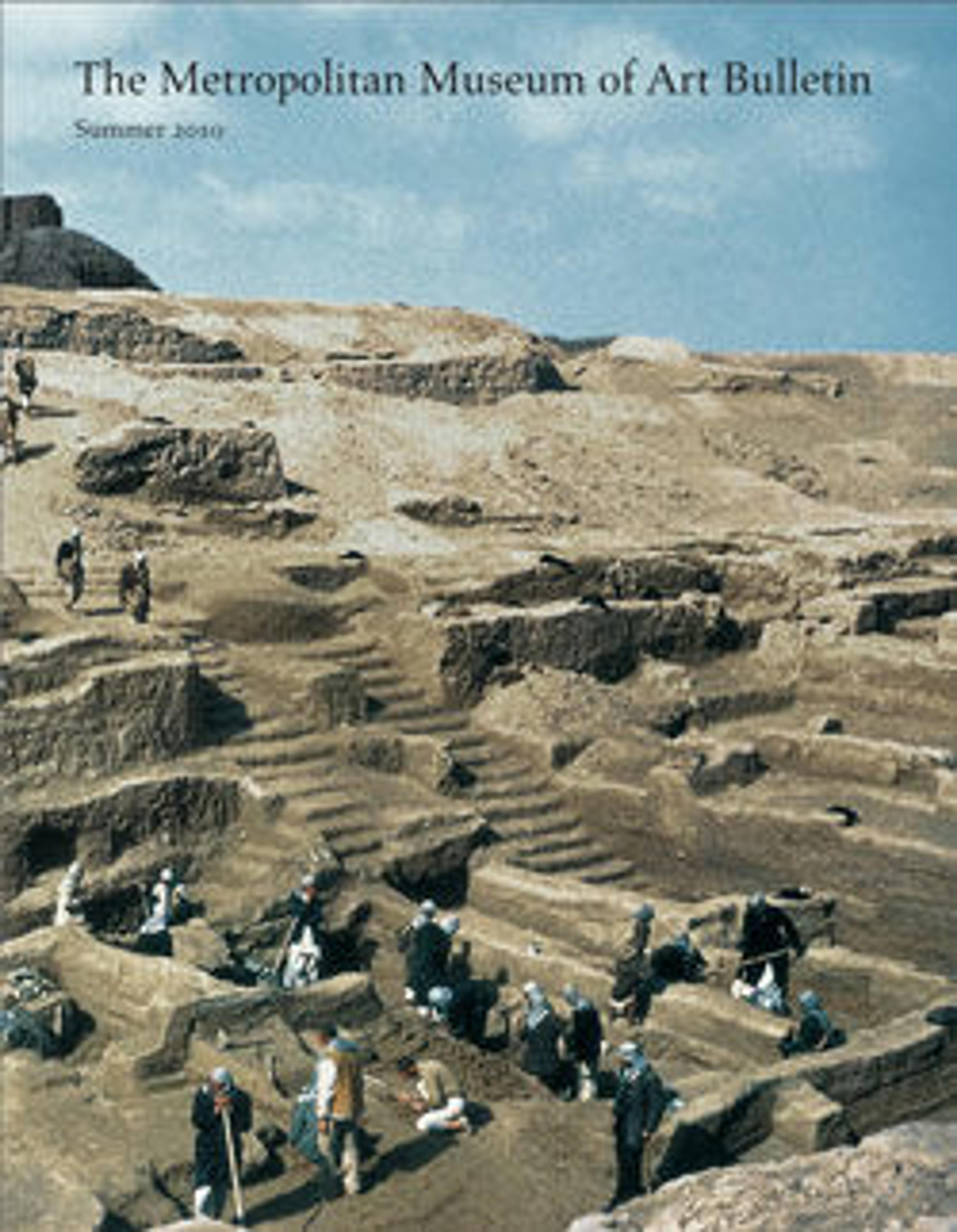Brick fragment with the head of an ibex
As well as reliefs in stone, Assyrian palaces and temples were extensively decorated with painted and glazed brick. Where ceramic decoration has survived, it frequently preserves ancient color, hardly any of which is extant on the stone reliefs or ivory furniture fittings.
Brick fragments often show abstract geometric patterns or ornament based on floral elements, but there were also figurative scenes. This fragment preserves the head of a goat, whose curved horns can still be seen. The ridges of the horns are shown using black chevrons, and such rapidly alternating patterns in black and white or other contrasting colors are a common feature of Assyrian art. The treatment of areas such as the eye gives clues as to how similar features in other media might originally have been colored.
Goats and ibexes are common in Assyrian art, sometimes shown leaping among mountains. Some of the closest comparators to this example are goats seen in an older (thirteenth century B.C.) Assyrian wall painting at Kar-Tukulti-Ninurta, where they flank a "sacred tree." They had significance of several kinds in Mesopotamia, often in the context of fertility and renewal. As today, wild goats were also noted for their ability to move through steep and rocky terrain: when Assyrian kings had campaigned in the mountains—difficult and dangerous territory for their armies—they would boast in their inscriptions of leaping from rock to rock like goats.
Brick fragments often show abstract geometric patterns or ornament based on floral elements, but there were also figurative scenes. This fragment preserves the head of a goat, whose curved horns can still be seen. The ridges of the horns are shown using black chevrons, and such rapidly alternating patterns in black and white or other contrasting colors are a common feature of Assyrian art. The treatment of areas such as the eye gives clues as to how similar features in other media might originally have been colored.
Goats and ibexes are common in Assyrian art, sometimes shown leaping among mountains. Some of the closest comparators to this example are goats seen in an older (thirteenth century B.C.) Assyrian wall painting at Kar-Tukulti-Ninurta, where they flank a "sacred tree." They had significance of several kinds in Mesopotamia, often in the context of fertility and renewal. As today, wild goats were also noted for their ability to move through steep and rocky terrain: when Assyrian kings had campaigned in the mountains—difficult and dangerous territory for their armies—they would boast in their inscriptions of leaping from rock to rock like goats.
Artwork Details
- Title:Brick fragment with the head of an ibex
- Period:Neo-Assyrian
- Date:ca. 9th century BCE
- Geography:Mesopotamia, Nimrud (ancient Kalhu)
- Culture:Assyrian
- Medium:Ceramic, glaze
- Dimensions:4 3/4 × 4 7/16 × 4 3/4 in. (12.1 × 11.2 × 12 cm)
- Credit Line:Rogers Fund, 1957
- Object Number:57.27.28
- Curatorial Department: Ancient West Asian Art
More Artwork
Research Resources
The Met provides unparalleled resources for research and welcomes an international community of students and scholars. The Met's Open Access API is where creators and researchers can connect to the The Met collection. Open Access data and public domain images are available for unrestricted commercial and noncommercial use without permission or fee.
To request images under copyright and other restrictions, please use this Image Request form.
Feedback
We continue to research and examine historical and cultural context for objects in The Met collection. If you have comments or questions about this object record, please contact us using the form below. The Museum looks forward to receiving your comments.
